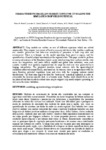Por favor, use este identificador para citar o enlazar este ítem:
http://www.alice.cnptia.embrapa.br/alice/handle/doc/1000868Registro completo de metadatos
| Campo DC | Valor | Lengua/Idioma |
|---|---|---|
| dc.contributor.author | MARIN, F. R. | pt_BR |
| dc.contributor.author | COSTA, L. G. | pt_BR |
| dc.contributor.author | NASSIF, D. S. P. | pt_BR |
| dc.contributor.author | PINTO, H. M. S. | pt_BR |
| dc.contributor.author | MEDEIROS, S. R. R. | pt_BR |
| dc.date.accessioned | 2015-10-31T04:29:36Z | - |
| dc.date.available | 2015-10-31T04:29:36Z | - |
| dc.date.created | 2014-11-25 | pt_BR |
| dc.date.issued | 2013 | pt_BR |
| dc.identifier.citation | In: CONGRESSO BRASILEIRO DE AGROMETEOROLOGIA, 18.; REUNIÃO LATINO-AMERICANA DE AGROMETEOROLOGIA, 7., 2013, Belém, PA. Cenários de mudanças climáticas e a sustentabilidade socioambiental e do agronegócio na Amazônia: anais. [Belém, PA: UFPA], 2013. | pt_BR |
| dc.identifier.uri | http://www.alice.cnptia.embrapa.br/alice/handle/doc/1000868 | pt_BR |
| dc.description | ABSTRACT: Crop models are written as sets of different equations which are solved numerically. They require time series of local environmental drivers like weather conditions and constant parameters that determine sensitivity of processes to both crop state and environment. There is a hamper on the model upscaling from point to region, and the quantification of model output uncertainity at the regional scale. This paper aimed to perform a conceptual analysis of the Brazilian climate zones based on long-term uniform weather data series (air temperature, soil water deficit, rainfall and global solar radiation), were each climatic variable were spatially organized and the maps for each one were generated by a kriging interpolation. The proposed zonation seems coherent with the agroecologycal conditions observed around Brazil, and based on the biomes, there is an agreement with the main Brazilian potential vegetation types and even with the cropping systems spatial distributions. The final map might be used for ?bottom-up? upscaling approach in order to extrapolate the location specific data to a broader scale. Further work should focus in the inclusion of soil data to reach a robust zone map to support crop model outputs up-scaling, as well as in the zones validation. | pt_BR |
| dc.language.iso | eng | eng |
| dc.rights | openAccess | eng |
| dc.subject | Modelagem | pt_BR |
| dc.subject | Interpolação | pt_BR |
| dc.subject | Interpolation | pt_BR |
| dc.subject | Agrometeorologia | pt_BR |
| dc.title | Characterizing Brazilian climate zones for up-scaling the simulated crop yield potential. | pt_BR |
| dc.type | Artigo em anais e proceedings | pt_BR |
| dc.date.updated | 2020-01-22T11:11:11Z | pt_BR |
| dc.subject.nalthesaurus | Models | pt_BR |
| dc.subject.nalthesaurus | Agrometeorology | pt_BR |
| dc.description.notes | CBA 2013, RLAA 2013. | pt_BR |
| dc.format.extent2 | Não paginado. | pt_BR |
| riaa.ainfo.id | 1000868 | pt_BR |
| riaa.ainfo.lastupdate | 2020-01-22 -02:00:00 | pt_BR |
| dc.contributor.institution | FABIO RICARDO MARIN, CNPTIA; LEANDRO G. COSTA, Esalq/USP; DANIEL S. P. NASSIF, Esalq/USP; HELENA, M. S. PINTO, UFSCar; SÉRGIO R. R. MEDEIROS. | pt_BR |
| Aparece en las colecciones: | Artigo em anais de congresso (CNPTIA)  | |
Ficheros en este ítem:
| Fichero | Descripción | Tamaño | Formato | |
|---|---|---|---|---|
| characterizing.pdf | 210,18 kB | Adobe PDF |  Visualizar/Abrir |









